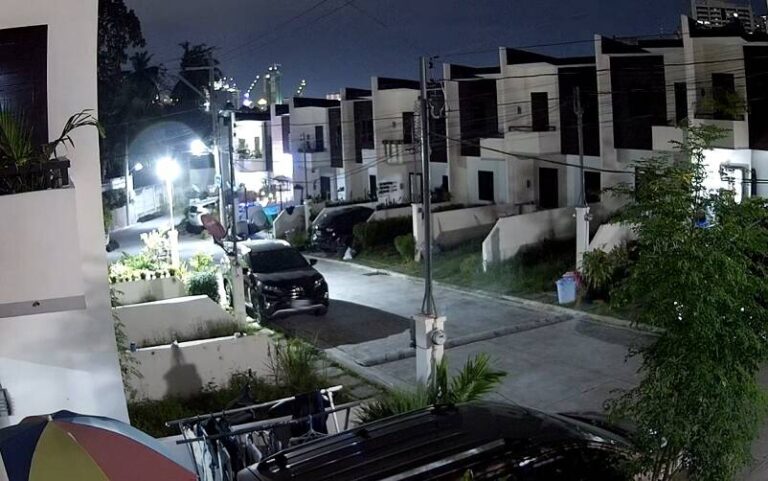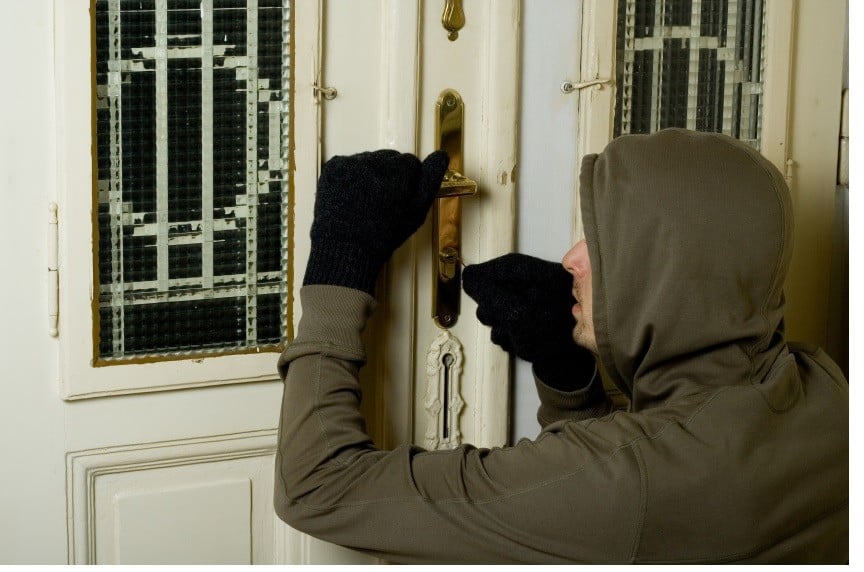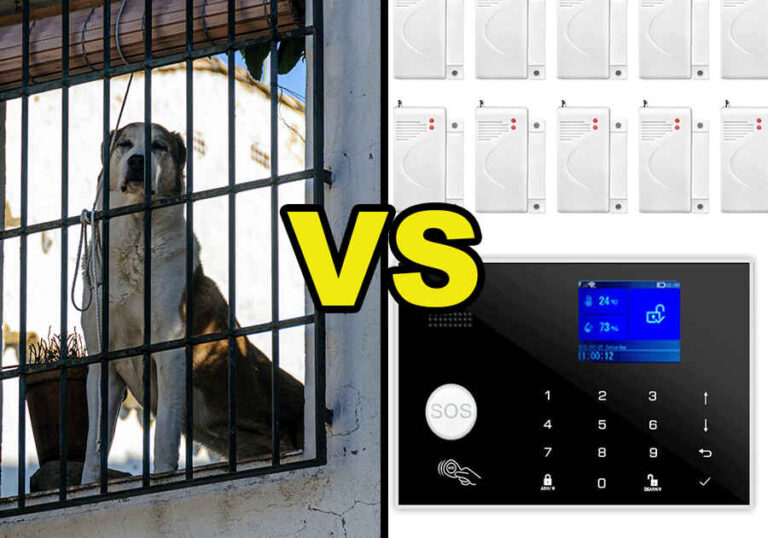The Advantages and Challenges of Using Thermal Security Cameras for Surveillance
Securitybros extensive experience in product testing and reviews covers over a decade, making us a trusted source for informed purchasing decisions. Read more how we test products! This post may include affiliate links. As an Amazon Associate or any other affiliate program we earn from qualifying purchases.
Thermal security cameras have revolutionized the way we look at security systems. They are a vital tool that can help protect your business, property, and personnel. In this article, we will explore what thermal security cameras are, how they work, and their advantages.
We will also look at the different applications of thermal security cameras, features to consider when choosing one, and common mistakes to avoid when using them. Finally, we will discuss the future of thermal security cameras, compare them to traditional cameras, and discuss the challenges in using them.
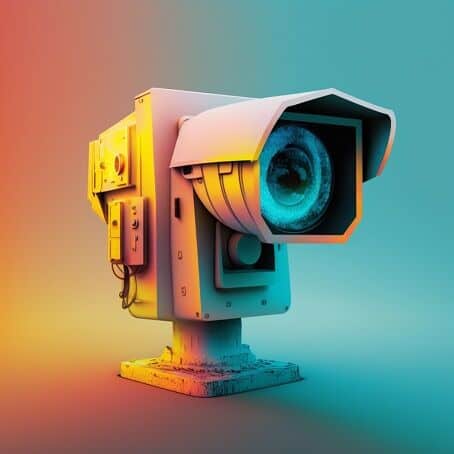
What is a Thermal Security Camera?
A thermal security camera is a type of surveillance camera that uses thermal imaging technology to detect infrared radiation emitted by objects in its field of view. The camera converts this radiation into a visible image that can be displayed on a monitor. Thermal security cameras are different from traditional cameras in that they do not rely on visible light to create images. Instead, they can “see” in complete darkness, through smoke, and even in adverse weather conditions.
Here is a typical thermal security camera from FLIR.
FLIR outdoor E70354 M232 Pan Tilt Thermal Camera 9hz
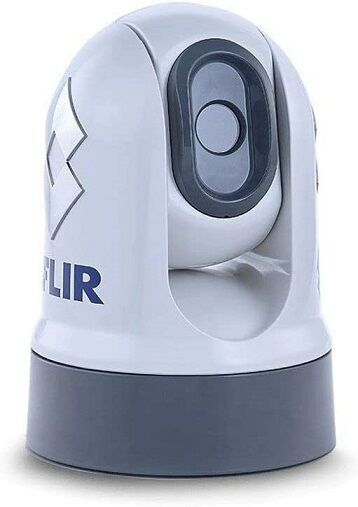
The FLIR outdoor E70354 M232 Pan Tilt Thermal Camera 9hz is an impressive surveillance tool that combines advanced thermal imaging technology with pan, tilt, and zoom capabilities. With a 320 x 240 resolution and a refresh rate of 9Hz, this camera can detect the slightest temperature changes, allowing you to see clearly in complete darkness, fog, smoke, or other low-visibility conditions.
One of the standout features of this camera is its ability to pan, tilt and zoom, which provides extended range performance and helps to improve navigation and safety. With a 360-degree continuous pan and an adjustable tilt of +110 to -90 degrees, you can view your surroundings from any angle and get a better perspective on your surroundings.
The FLIR M232 also offers 2X digital zoom capability, allowing you to get a closer look at any objects or individuals in the scene. This feature can be particularly useful when trying to identify small or distant targets.
In addition to its impressive imaging capabilities, the FLIR M232 is also Ethernet-enabled, making it easy to integrate with other electronics. It also uses IP video technology, which simplifies installation by eliminating the need for extra video signal cables.
The FLIR M232 is an ideal choice for marine surveillance applications, such as navigating through harbors or coastal areas. It can help you see bridges, docks, buoys, and other vessels, night and day. Moreover, it can help boaters find people in the water faster than using spotlights and radar alone.
Overall, the FLIR outdoor E70354 M232 Pan Tilt Thermal Camera 9hz is a powerful surveillance tool that provides advanced thermal imaging capabilities and pan, tilt, and zoom functionality. Its compact, lightweight design and IP video connectivity make it easy to install and integrate with multiple MFDs, and its ClearCruise™ intelligent thermal analytics technology offer boaters an entirely new level of awareness and safety.
How Does a Thermal Security Camera Work?
Thermal security cameras work by detecting the amount of infrared radiation emitted by an object. All objects, including humans, emit infrared radiation. The amount of radiation emitted is proportional to the object’s temperature. The thermal camera uses this radiation to create a heat map of the object, which is then converted into a visible image using software. This process allows the camera to detect heat signatures of people, animals, and objects, making it an essential tool for security and surveillance.
Advantages of Thermal Security Cameras
Thermal security cameras offer several advantages over traditional cameras. For one, they are not affected by lighting conditions, as they do not require visible light to create an image. This makes them ideal for use in low-light and no-light environments. They are also less likely to be affected by adverse weather conditions, such as rain, fog, and snow. Additionally, thermal cameras can detect objects at longer ranges than traditional cameras, making them ideal for long-range surveillance.
Applications of Thermal Security Cameras
Thermal security cameras have many different applications. They are commonly used in perimeter security systems to detect and track intruders. They are also used in critical infrastructure protection, such as power plants and oil refineries. They can be used to monitor wildlife, detect fires, and search and rescue operations. Thermal security cameras are also becoming increasingly popular in law enforcement, where they can be used to track suspects and gather evidence.
Features to Consider When Choosing a Thermal Security Camera
When choosing a thermal security camera, there are several features to consider. The first is the camera’s resolution. The higher the resolution, the more detail the camera can capture. The second is the camera’s range. Different cameras have different ranges, so it is essential to choose one that meets your needs. The third is the camera’s field of view. The wider the field of view, the more area the camera can cover. Finally, consider the camera’s mounting options, as this will affect where and how you can install the camera.
Common Mistakes to Avoid When Using Thermal Security Cameras
One common mistake when using thermal security cameras is not understanding their limitations. Thermal cameras are not suitable for identifying people or reading license plates.
Future of Thermal Security Cameras
The future of thermal security cameras looks bright. As technology continues to evolve, we can expect to see improvements in resolution, range, and sensitivity. New software algorithms will also be developed to enhance the accuracy and reliability of thermal cameras. In addition, thermal cameras are expected to become more affordable, making them accessible to more businesses and individuals.
Comparison between Thermal Security Cameras and Traditional Cameras
Thermal security cameras and traditional cameras have different strengths and weaknesses. Traditional cameras are better at capturing visual details, while thermal cameras excel at detecting heat signatures. Traditional cameras are also more affordable and easier to install, while thermal cameras require specialized training and can be more expensive. However, when it comes to surveillance in low-light and no-light conditions, thermal cameras are superior.
Challenges in Using Thermal Security Cameras
While thermal security cameras are a valuable tool for security and surveillance, there are some challenges in using them. One of the biggest challenges is that thermal cameras can be affected by environmental factors such as humidity and temperature. They also require regular maintenance to ensure that they are functioning correctly. Additionally, thermal cameras can be difficult to use in urban environments, where there are many sources of heat, such as cars and buildings.
Conclusion
Thermal security cameras are a valuable tool for security and surveillance, offering advantages over traditional cameras in low-light and no-light conditions. They are used in a variety of applications, from perimeter security to law enforcement. When choosing a thermal camera, it is essential to consider factors such as resolution, range, and field of view. While there are some challenges in using thermal cameras, their future looks bright as technology continues to improve.
FAQs
Are thermal security cameras expensive?
Thermal security cameras can be more expensive than traditional cameras, but the cost has decreased in recent years, making them more accessible to businesses and individuals.
Can thermal cameras see through walls?
No, thermal cameras cannot see through walls, but they can detect heat signatures of objects and people on the other side of the wall.
What are the advantages of using thermal security cameras?
Thermal security cameras offer several advantages over traditional cameras, including the ability to see in low-light and no-light conditions, detect heat signatures, and work in adverse weather conditions.
What is the resolution of a thermal security camera?
The resolution of a thermal security camera varies, but higher resolution cameras can capture more detail.
What are some common mistakes to avoid when using thermal security cameras?
One common mistake is not understanding the limitations of thermal cameras, such as their inability to identify people or read license plates. Additionally, not properly maintaining the cameras can lead to reduced accuracy and reliability.

